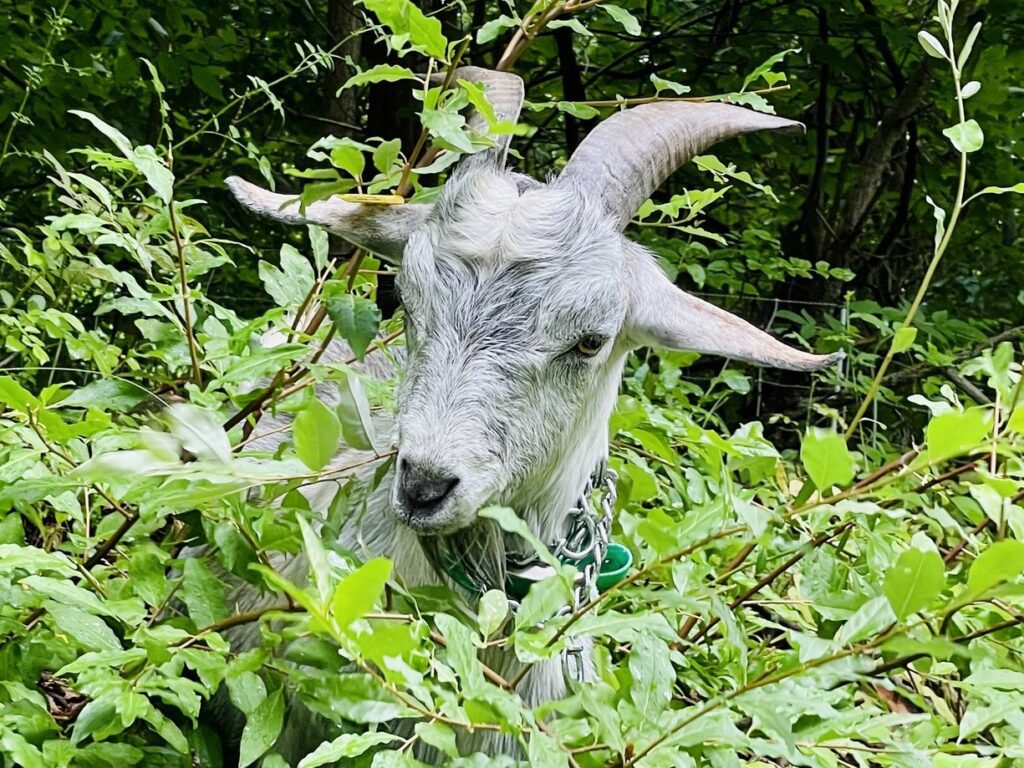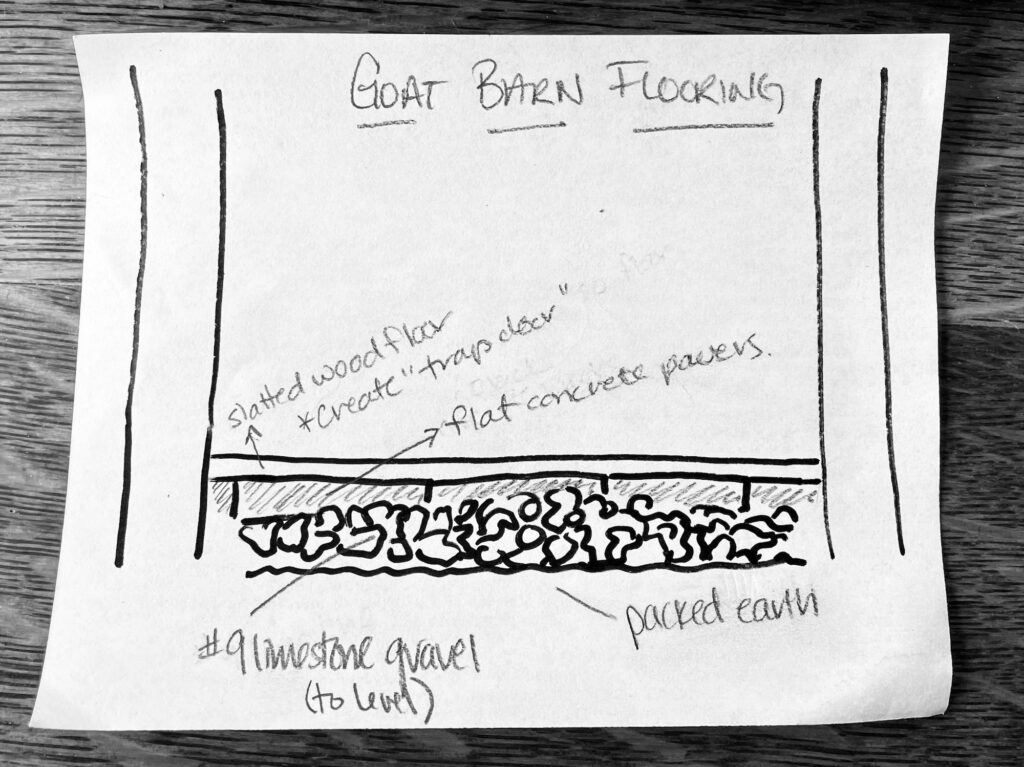A Day to Get Up to Speed
Goat Barn Placement in Wooded Setting

- Sunlight and Ventilation:
- Choose a location that allows plenty of sunlight to reach the barn. This helps with natural lighting and warmth.
- Ensure good ventilation by placing the barn in a way that prevailing winds can pass through, helping to keep the air fresh and reduce moisture.
- Terrain and Drainage:
- Select a site with well-drained soil to prevent waterlogging. Goats are susceptible to hoof problems, so a well-drained area helps maintain good hoof health.
- Avoid low-lying areas prone to flooding, especially during heavy rain.
- Accessibility:
- Ensure easy access for both goats and caretakers. A flat or gently sloping terrain is preferable for ease of movement.
- Consider proximity to a water source for both the goats and barn cleaning.
- Protection from Predators:
- Position the barn in a way that provides some natural protection from predators. Clear away dense underbrush and ensure good visibility for the goats and caretakers.
- Consider using fencing or other predator deterrents as an additional layer of protection.
- Forage Availability:
- If possible, place the barn in an area where there is access to good forage for the goats. This can help supplement their diet and reduce the need for additional feeding.
- If possible, place the barn in an area where there is access to good forage for the goats. This can help supplement their diet and reduce the need for additional feeding.
- Space for Expansion:
- Plan for future expansion if you anticipate an increase in the size of your goat herd. Ensure there is enough space for additional barns or grazing areas.
- Plan for future expansion if you anticipate an increase in the size of your goat herd. Ensure there is enough space for additional barns or grazing areas.
- Environmental Impact:
- Minimize the impact on the surrounding environment. Avoid clearing large areas of trees unnecessarily, and integrate the barn into the natural landscape.
- Minimize the impact on the surrounding environment. Avoid clearing large areas of trees unnecessarily, and integrate the barn into the natural landscape.
- Zoning and Regulations:
- Check local zoning regulations and permits before constructing the barn to ensure compliance with local laws.
Super Monday (The Next Day)
Diagonal Slatted Wall

Flooring Layers
Asked Michelle what the goat barn should rest on. She said most people do bare earth—and then add mats and straw and such appropriately. However, during wet/rainy seasons (like now) there is mud everywhere! (Feb. 1, 2024)
Layers:

————rubber mats/straw————
(depending on season)
—————–DURA mats—————
(for comfort)
———slatted wood “trap” floor——
(liftable for cleaning)
————flat concrete pavers———-
(can power wash periodically)
(can lift if needed)
————#9 limestone gravel———–
(for drainage)
—————packed earth—————-
